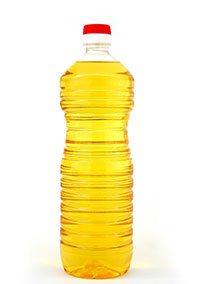Biofuels – Biodiesel, Renewable Diesel, and other Biofuels

Biofuels that have physical properties similar to and can be used for the same purposes as petroleum distillate fuels include biodiesel, renewable diesel, renewable jet/aviation fuel, and renewable heating oil. Along with fuel ethanol, they qualify for use under the U.S. Renewable Fuel Standard (RFS) Program and may also qualify for use under state government fuel standards and programs.
Biodiesel is one of the first biofuels
Rudolf Diesel, the inventor of the diesel engine in 1897, experimented with using vegetable oil as fuel in his engines. The fuel made from vegetable oils and animal fats that we call biodiesel today is named after him because it is mostly used in diesel engines (as is petroleum diesel fuel). Biodiesel meets the American Society for Testing and Materials (ASTM) specification D6751 and is approved for blending with petroleum diesel/distillate.
Biodiesel is produced by transesterification of vegetable oils and animal fats. Vegetable oils (mainly soybean oil) are the main feedstocks for U.S. biodiesel production. Other major U.S. biodiesel feedstocks include animal fats from meat processing plants and used/recycled cooking oil and yellow grease from restaurants. Rapeseed oil, sunflower oil, and palm oil are major feedstocks for biodiesel production in other countries. Algae are potential sources for biofuels. Algae contain pockets of fat that help keep them afloat, which can be collected and processed into biofuels. The feedstocks used for biodiesel production can affect the physical properties and uses of biodiesel.
Feedstock inputs to U.S. biodiesel, renewable diesel, and other biofuels production, 2021
Feedstock inputs to U.S. biodiesel, renewable diesel, and other biofuels production, 2021soybean oil corn oil canola oil recycled feeds and wastes Data source: U.S. Energy Information Administration (EIA), Monthly Biofuels Capacity and Feedstocks Update, March 2022Note: Feedstocks for ethanol production are not included.
Total = 23.82 billion pounds
Feedstock inputs to U.S. biodiesel production, 2019
Feedstock inputs to U.S. biodiesel production, 2019soybean oil corn oil recycled feedstocks canola oil animal fats Data source: U.S. Energy Information Administration (EIA), Monthly Biodiesel Production Report, May 2020

Total=12.75 billion pounds
57 %


A photograph of vegetable oil in a bottle.
Renewable diesel and other biofuels
Renewable diesel and other (non-fuel ethanol) biofuels and bio intermediates can be produced from nearly any biomass feedstock, including those used for biodiesel production, through a variety of processes such as hydrotreating, gasification, pyrolysis, and other biochemical and thermochemical technologies.
Renewable diesel is a biomass-based diesel fuel similar to biodiesel, but with important differences. Renewable diesel is a hydrocarbon that is chemically equivalent to petroleum diesel and can be used as a drop-in biofuel and can be transported in petroleum pipelines and sold at retail stations with or without blending with petroleum diesel. Renewable diesel production uses a hydrogenation process rather than the esterification process used to produce biodiesel. Because renewable diesel is a drop-in fuel, it meets ASTM D975 specification for petroleum diesel and can be seamlessly blended, transported, and even co-processed with petroleum diesel.
Most renewable diesel is hydrogenation-derived renewable diesel (HDRD) or hydro processed esters and fatty acids (HEFA) produced by hydrogenation of triglycerides, a similar process used for desulfurization of petroleum diesel. For this reason, existing petroleum refineries can be converted for renewable diesel production with only modest retrofits. However, hydrotreatment of renewable feedstocks requires significantly more hydrogen than desulfurization of diesel, and the source of the hydrogen could affect whether or not the renewable diesel can meet national or state standards for biofuels. Other methods can be used for renewable diesel production, such as gasification and pyrolysis. Renewable heating oil is similar to renewable diesel fuel but meets ASTM D396 for fuel oils.
Renewable jet fuel may be called sustainable aviation fuel (SAF), alternative jet fuel (AJF), or biojet depending on the context or fuel standard under which it can be used. Renewable jet fuel meets ASTM D7566, which allows for up to a 50-50 blend of biomass-derived blending components and petroleum jet fuel. Other non-fuel ethanol biofuels include renewable naphtha, renewable gasoline, renewable propane (a by-product of renewable diesel and SAF production), and other emerging biofuels. Another aviation biofuel that is being tested for use is alcohol-to-jet (ATJ) (or ethanol-to-jet [ETJ]).
Last updated: June 29, 2022.
Courtesy of EIA Gov
